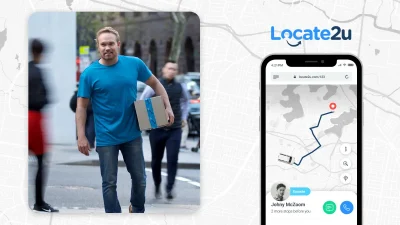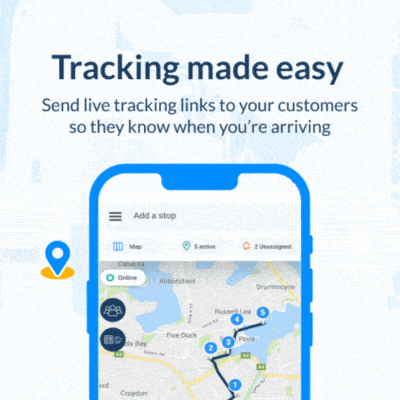In the world of online shopping, returns are an inevitable part of the process. Managing product returns effectively is crucial for maintaining customer loyalty and a good reputation for your online store. This is where a good reverse logistics process comes in. Reverse logistics processes, which involve the movement of goods from the customer back to the retailer or supplier, are essential in ensuring returns are handled efficiently.
Understanding product returns to minimize the impact on delivery services is a key aspect of the reverse supply chain, and effective management can help businesses provide efficient returns processes that can lead to store credit or exchanges.
Effective returns management processes not only help to process good returns quickly but also help to reduce the number of returns and minimize costs associated with the reverse supply chain. In this article, we’ll explore how a good returns management process can benefit your online store and how Locate2u can help to reduce the number of returns your business receives.

Understanding Product Returns to Minimize Impact on Delivery Services
Why do people return products?
Returns-related consumer behavior study
Customers who have a great experience with the returns procedure are more likely to remain devoted customers, according to consumer behavior studies on returns. A bad returns experience, on the other hand, can significantly affect consumer satisfaction and subsequent purchases. Because of this, it is crucial for organizations to comprehend human psychology in order to enhance their returns procedure.
Typical justifications for product returns
People frequently return goods for a number of reasons. These include getting a faulty or damaged item, buying the incorrect thing or size, deciding not to make the transaction, or getting something different from what was purchased. Customers could also send back a product because of a subpar web description, insufficient pictures or video, or exaggerated expectations.
Elements of emotion that influence product returns
Product returns are also affected by emotional considerations. A customer might decide to return a product if they receive it broken or defective, for instance, as a result of their frustration. Similarly, a customer could experience disappointment if a product falls short of its goals or does not perform as promised. After making a purchase, customers may occasionally feel regret or buyer’s remorse, which may prompt them to return the item.
Returns’ Effect on Delivery Services
Returns for Delivery Services are Expensive
Returns are a hassle for both the customer and the delivery operator. Delivery businesses’ operational expenses might dramatically rise as a result of the additional processing and transportation required for each returned package. When processing returned goods, delivery firms must also pay costs including personnel, gasoline, and storage, which can have a detrimental effect on their profitability.
Delivery Times and Customer Satisfaction Affected by Returns
Deliveries and customer satisfaction may suffer as a result of returns. It takes time for the delivery service to receive and process goods that a client returns. Customers may become unsatisfied as a result of delays in refunds or the delivery of new goods. Customers who had a bad experience were less likely to use that delivery service again, which could harm the business’s reputation and result in a decrease in sales.
Returns Have an Impact on Delivery Times and Customer Satisfaction
Returns may have an adverse effect on deliveries and customer satisfaction. The delivery service must wait for the returned goods to be received and processed. Customers may get dissatisfied if refunds take longer to process or new items take longer to arrive. Customers were less inclined to use that delivery service again after a negative encounter, which might hurt the company’s reputation and lower revenues.
Minimizing the Impact of Returns on Delivery Services
Returns can have a big impact on delivery services’ productivity and profitability. However, there are tactics that companies can use to lessen the effect returns have on their daily operations.
Techniques for Cutting Down on Returns
Reducing the number of returns in the first place is one of the best strategies to lessen the effect of returns on delivery services. This can be accomplished by putting into practice tactics like enhancing product descriptions and photos, supplying precise sizing details, and providing customer service to resolve any issues or queries prior to a purchase. Businesses may also want to think about developing a program that lets customers test things before buying them.
Businesses can use a number of additional strategies in addition to the ones already listed to reduce returns and lessen the impact on delivery services.
Provide thorough product descriptions and images
Giving customers accurate and thorough product information can aid them in making knowledgeable purchases, decreasing the risk of returns brought on by misunderstandings or unhappiness.
Give sizing and fit details
Sizing and fit problems are common reasons why clothing and shoes are returned. Offering precise sizing details, such as dimensions and fit descriptions, can assist customers in choosing the appropriate size and lower return rates.
Provide top-notch client service
High-quality customer service can assist clients in resolving any problems or worries prior to making a purchase, decreasing the possibility of returns. Offering client inquiries and concerns via live chat, phone assistance, or email help is one way to do this.
Establish a “try before you buy” program
Reducing the number of returns can be achieved by allowing customers to test things before buying them. For instance, some businesses permit clients to test a product for a predetermined amount of time before deciding whether to keep it.
Make use of client feedback
Businesses can find the main reasons for returns and make changes to avoid them in the future by gathering feedback from customers who have returned things.
Businesses can lower the number of returns and lessen the impact on delivery services by putting these strategies into practice. This can enhance client pleasure, cut expenses, and support ethical company practices.

The Best Ways to Manage Product Returns
It’s crucial to manage product returns effectively when they do happen to lessen the impact on delivery services. Providing detailed instructions on how to initiate a return, offering free or reduced return shipping, and issuing prompt refunds or swaps are all examples of best practices. To save inventory and storage expenses, organizations should also have a system in place for swiftly inspecting and replenishing returned goods.
It’s critical to manage product returns effectively to reduce their influence on delivery services in addition to minimizing the number of returns. Businesses can accomplish this by employing best practices that guarantee a simple and straightforward return process for clients.
Giving customers clear information on how to start a return is one of the most important components of processing goods returns. It should be simple to find this information on the company’s website and in the shipment packaging. Giving clients clear directions might make them feel less confused and frustrated, which makes for a better overall experience.
Another best practice for managing product returns is to provide free or reduced return postage. By offering this service, businesses can encourage clients to make purchases and improve client loyalty. Customers are more likely to return to a company if the return process is simple and includes free or reduced return shipping.
Finally, prompt refunds or swaps are necessary for ensuring customer happiness. Customers want their money returned or a replacement item delivered as soon as feasible. To reduce inventory and storage expenses, businesses should have a system in place for handling returns swiftly and effectively. This system should include a procedure for checking and replenishing returned goods.
The Impact of Returns and the Role of Technology
A big part of reducing the effect of returns on delivery services is technology. Data analytics and machine learning techniques, for instance, can be used to find patterns and forecast possible profits. Following that, this data can be utilized to enhance product descriptions and visuals, address frequent problems, and provide customers with tailored recommendations. Technology can also speed up the returns process by enabling clients to initiate returns online and follow their progress in real-time.
Another way that technology may help to lessen the impact of returns is by increasing consumer visibility and openness throughout the delivery process. For example, real-time package tracking and delivery alerts could reduce the likelihood of missed deliveries and consequent reimbursements brought on by customer absence. By employing data analytics to pinpoint delivery routes with a high rate of missed deliveries, businesses can also improve their delivery routes and reduce the risk of missed deliveries.
Businesses can strengthen their internal procedures in addition to using technology to reduce the impact of returns. This entails creating more effective warehouse and inventory management systems as well as spending money on return-handling staff training and education. Businesses can decrease the time and expense involved with returns and lessen the impact on delivery services by optimizing these operations.
Finally, companies can look into different distribution options including drop-shipping and buying online, and pick-up in-store (BOPIS). These models can aid in lowering the number of returns as well as the necessity for transportation.
Returns are a necessary component of the delivery process, but businesses can take measures to reduce the impact they have on delivery services. By understanding why customers return items, using best practices for processing returns, employing technology, optimizing internal processes, and looking into alternative delivery models, businesses can reduce the number of returns and the detrimental consequences they have on delivery services.

Reduce product returns with Locate2u
Locate2u is a delivery route optimization software that can help reduce returns by improving delivery efficiency and accuracy. By using Locate2u’s route optimization feature, delivery drivers can efficiently plan their routes and reduce delivery times. This can help ensure that customers receive their orders in a timely and accurate manner, reducing the likelihood of returns due to delivery issues such as missed or late deliveries.
Locate2u can also help with real-time tracking, allowing customers to track their orders and receive notifications on the delivery status. This helps reduce the number of customer inquiries about the delivery status, which can often lead to returns due to customer frustration or dissatisfaction.
Overall, Locate2u can be a valuable tool for businesses looking to reduce the impact of returns on their delivery services. By optimizing delivery routes, improving accuracy and efficiency, and providing real-time tracking and analytics, Locate2u can help businesses improve customer satisfaction and reduce the likelihood of returns.
Click here to learn more about how you can streamline your delivery operations!

Share this article
About the author
Marketing Coordinator at Locate2u having completed a Bachelor of Creative Arts, majoring in English Literature and Creative Writing. I have extensive experience in editing and proofreading, as well as creating content for a range of audiences.














